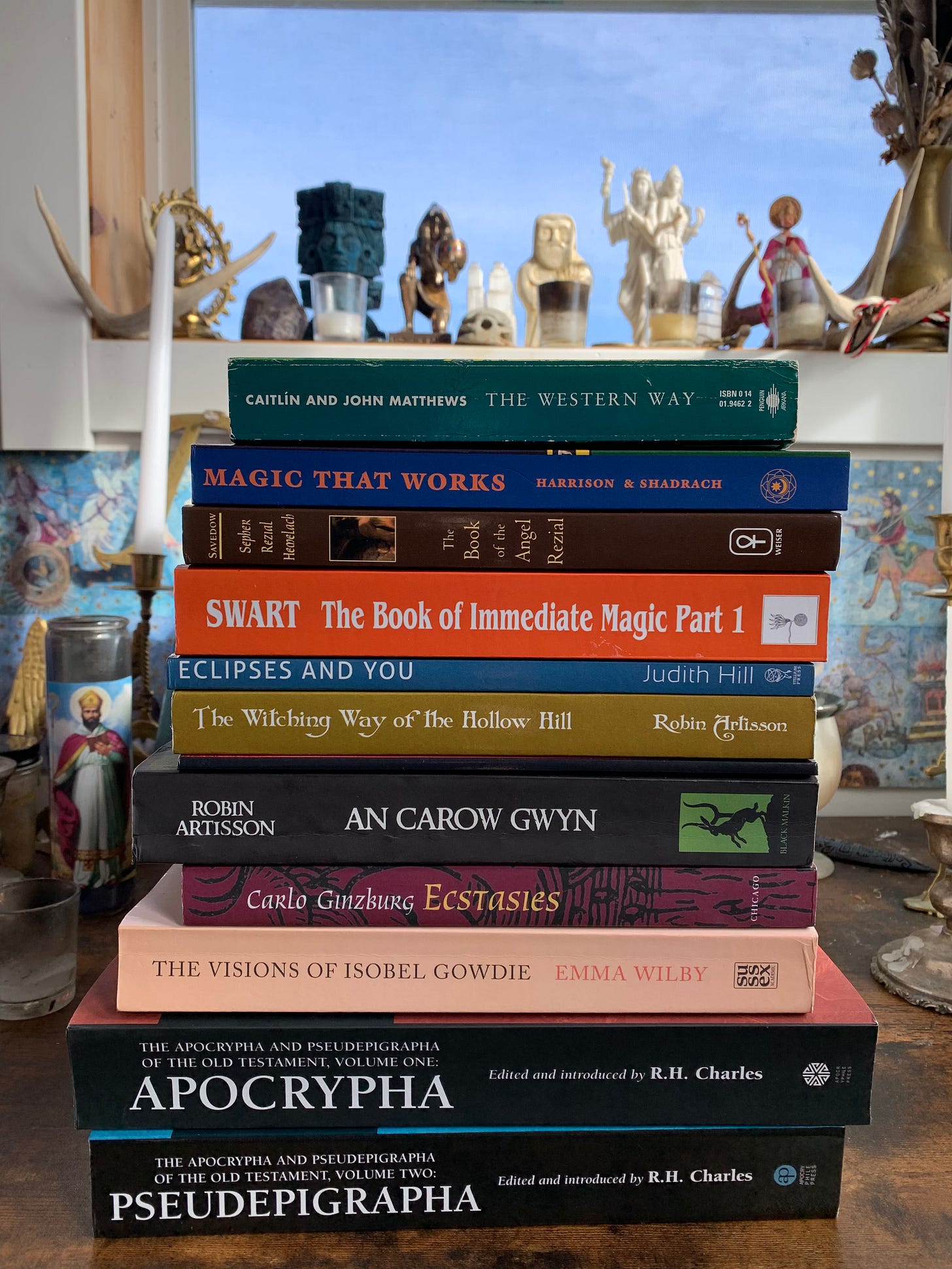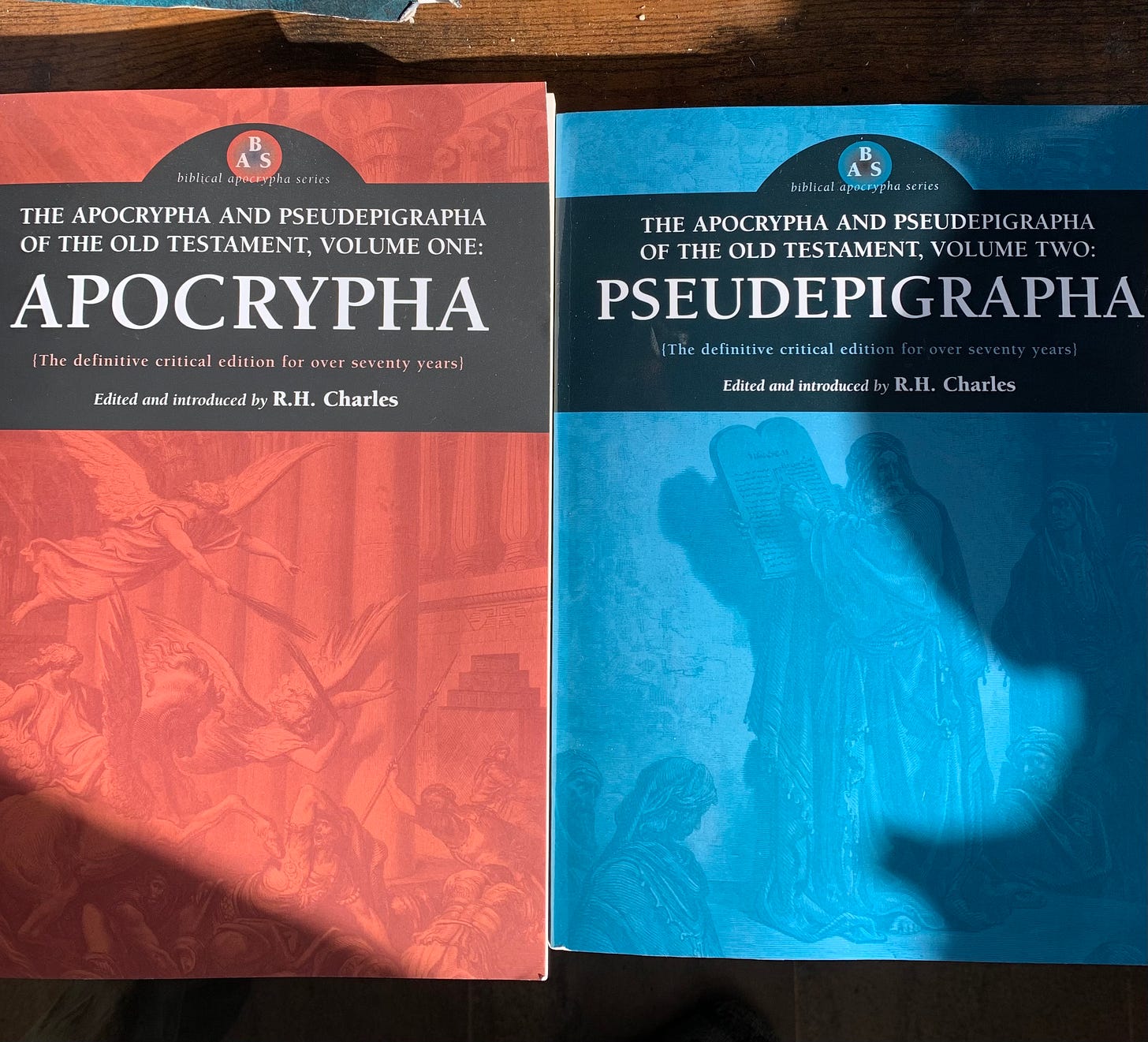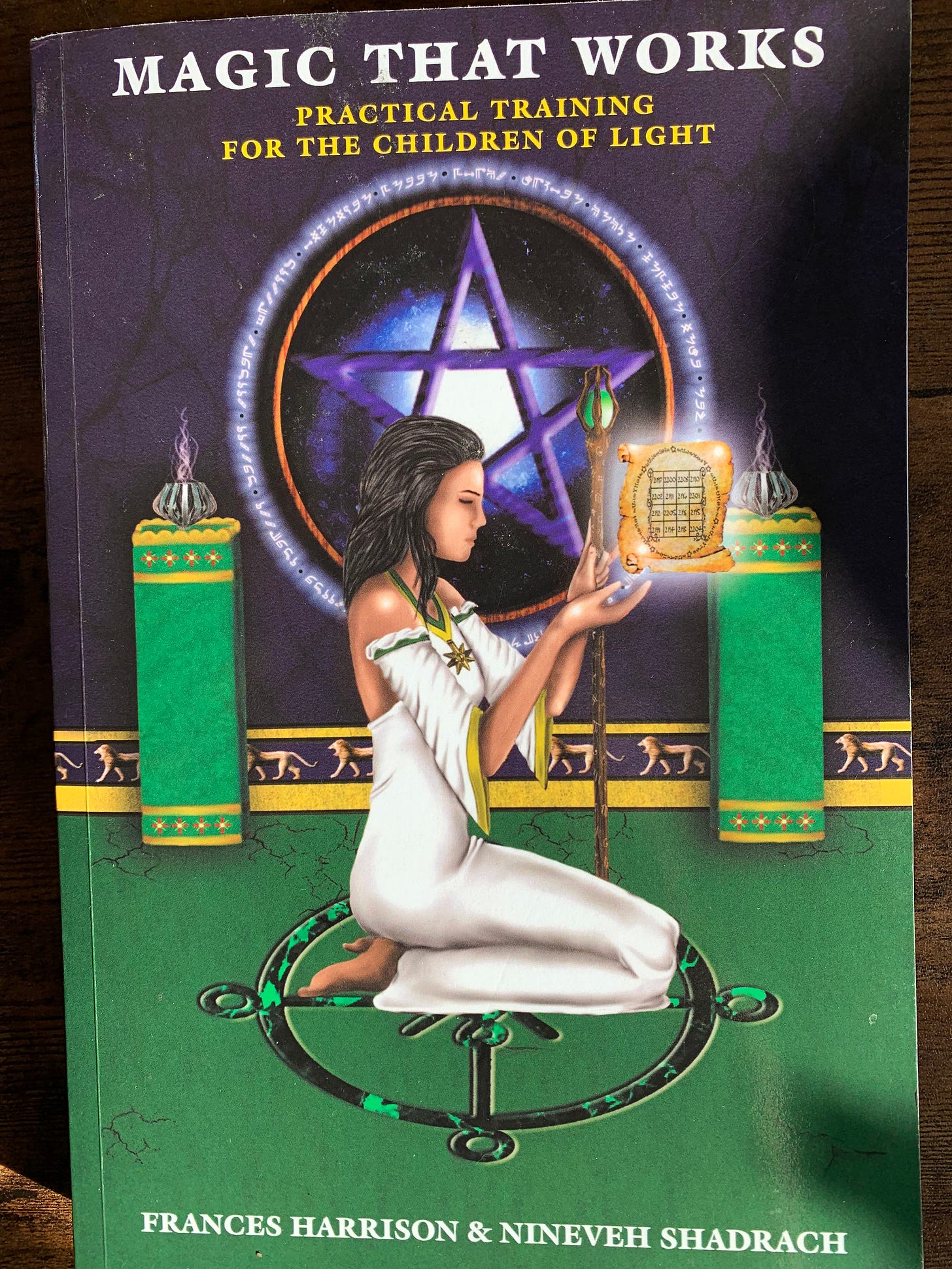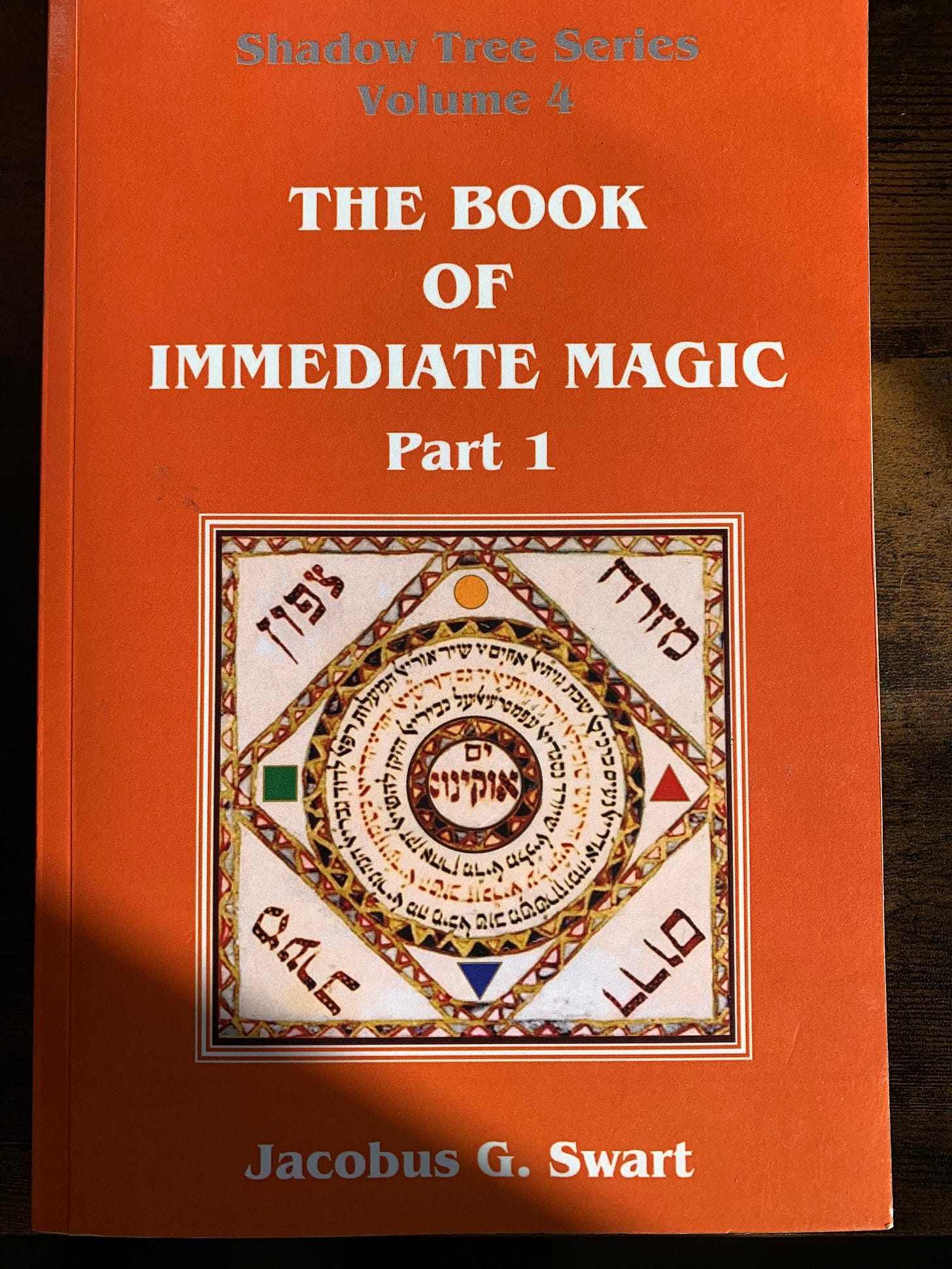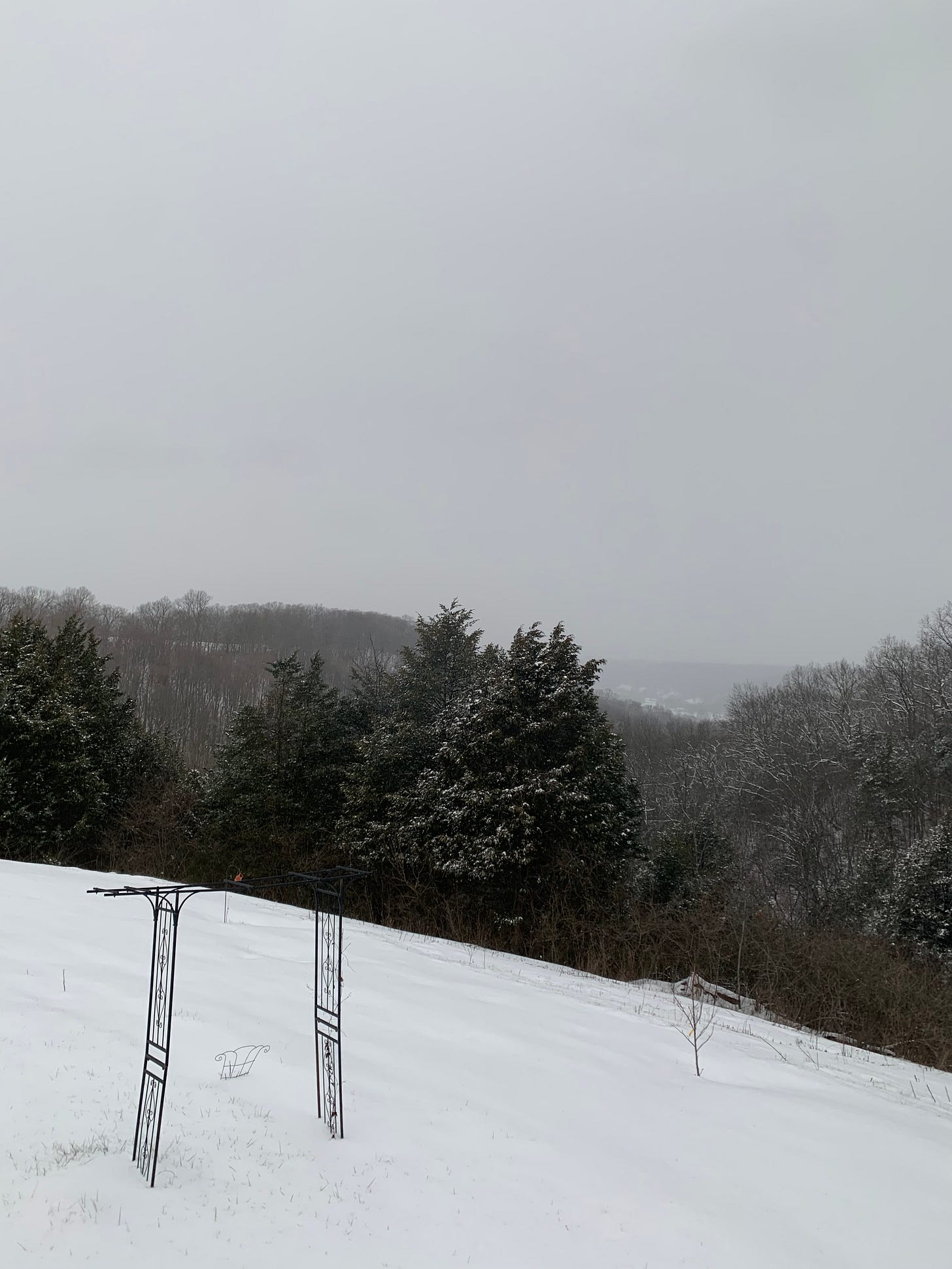Hello Friends,
Just after I finished writing the lengthy piece on the apocalypse and its archetypal significance, as chance would have it, “snowpocalypse” is on the way for my region. After having nearly no snow for several winters running, 10-12” are predicted for or region tomorrow and Monday, and the forecasters are very excited. My son and I braved the grocery store just now and it wasn’t too bad. I saw the dairy cases and shelves that would ordinarily be full of eggs, butter, and bread empty, but the organic section was full, and being organic farmers, we generally just pay a bit more and buy the organic version if possible. The rest of the afternoon will be spent getting the livestock ready for the winter weather by moving the cows to where they have a windbreak and water that won’t freeze and moving the chickens to a warmer coop.
When the cold and the snow settle in to stay for a while next week, it will be an excellent time to catch up on reading the growing stack of books in my “to be read” pile. For my birthday back in October and for this past Christmas, my family very generously gave me the gift of books and gift certificates to buy them. They know me so well.
I have a pretty diverse selection there, and I have had time to read some of all of them, and most of some of them, enough to be able to make a few short (I promise, I know you are busy people) posts to introduce these books and their significance to my writing work and/or my practice.
So, in the interest of keeping this brief I’d like to start introduce the first two titles, which are a set:
These huge tomes are the classic reference books on what is known as Old Testament Apocrypha and Pseudepigrapha, texts that weren’t in the canon of either Christian or Jewish Scriptures. The word apocrypha, from the Greek for secret or hidden away, also often has the connotation of something with doubtful authenticity. The Apocrypha are books that are included in some Catholic Bibles, but not in the Protestant or Jewish canon. Pseudepigrapha, or falsely-attributed books, are texts that are supposed to have been written by famous historical or legendary people, but were actually composed in the name and spirit of that person. They are not forgeries, but rather, important works in their own right to which the name of a notable person from the past was attached to lend them authority. Examples include the Books of Enoch, Baruch, Ezra, and the works of Pseudo-Dionysius the Areopagite (the latter are not in the book, btw.).
These have been on my list for years, and I have used a PDF and a Kindle version for research, but I really wanted a physical copy for my library, especially of Volume Two. I have other versions of the Apocrypha but I am most interested in the fascinating texts of the Enoch tradition, which contain the legendary accounts of the Fall of the Angels, their mating with human women and spawning of a race of giants and monsters, the Nephilim, who became (according to the text) the ancestors of every sprite, elf, goblin and demon that every haunted or troubled the children of Adam in the times since. The fallen angels, according to 1 Enoch, are also responsible for teaching the first humans all of the gifts of civilization, medicine, agriculture, metallurgy, astronomy, herb craft, and of course, magic. The idea of semi-divine outsiders who bring technological and magical knowledge to humanity is a fascinating one, and one with a long resonance in the magical and esoteric tradition. And although I don’t take the stories literally as such, I do believe there is a certain amount of truth hidden in them regarding the spiritual and daimonic origins of knowledge and creativity. I have discussed this idea in my work here.
There are also fantastic accounts of the Divine Throne room and celestial palaces, and psychedelic descriptions of superhero-like angels, a trip around the celestial spheres and more. These accounts make excellent material for what we now call path working. Indeed, the Hekhalot and Merkabah mystics of Jewish esotericism used them as guidebooks for celestial ascent and added to their own texts elaborating on the tropes of the mystic vision of the Divine Throne and the Chariot mentioned in these texts. The books are print on demand facsimile copies of the 1913 Clarendon Press Edition. Translated and Edited by Irish scholar and translator R.H. Charles.
I highly recommend Volume Two especially for those of you who are interested in the “weird stuff” and want a good translation of the primary sources in English.
The next book I’m going to pull out of this stack is this one, Magic That Works, by Frances Harrison and Nineveh Shadrach. Despite the title, which no offense to the authors, could be better, this book is an absolute gem. I found out about it recently while I was researching my essay Spirits of the North Wind, because I was searching for source texts about djinn lore. It introduces a system of magic with an Arabic or Middle Eastern flavor. Shadrach, who is a native of Saudi Arabia, draws on sources which are available only in Arabic, (although I hear a partial English translation of the Shams al Ma’arif is now available), and which you don’t see anywhere else. The book contains many beautiful and powerful prayers and practices, including a gorgeous Invocation of Ishtar which is intended to proceed angelic work. Primarily concentrating on working with angels and celestial spirits, ruhaniyyat, as well was having a section on planetary practice. The system of magic presented in the book eventually works up to advanced practices of magic involving djinn conjuration. Although it starts out at with basics, this is not a simple book for beginners, introducing as it does an approach to magic that will be unfamiliar to most Western practitioners. Shadrach and Harrison present to readers magic with roots which extend to the fabled Sabians of Harran, who are well known to anyone familiar with the Picatrix.
The Ishtar invocation as well as some of the healing, blessing, and protection practices have quickly become an important part of my repertoire, the more advanced practices which involve numerology and Arabic magic squares will take a bit more time to learn. One approach the authors recommend that I have also taken on board is the rhythmic repetition of the nomina. The invocations in the book are repeated multiple times, which takes longer but induces a trance state conducive to effective work. I highly recommend this book as to anyone who, like me, who is intrigued by the magic of the Middle East.
The next title in the pile up for discussion is the fourth volume in the Shadow Tree series by Kabbalist Jacobus Swart. I have five of the volumes in this series and they are all excellent. This volume, my most recent purchase from the series, is no exception. Swart writes in the tradition of practical Kabbalah, Kabbalah ma’asit (as distinguished by theoretical Kabbalah, Kabbalah iyyunit), the magical branch concerned with the production of amulets, talismans, and incantations. As with the other books in the series, there is no shortage of spirituality and theory, but the emphasis is on specific prayers, exercises, and divine and angelic names and formulae to bring about real world results. There are techniques for breathing, energy moving, and visualizations, as well as a section for formulating a personalized Kabbalistic incantation for a variety of concerns.
I have been interested in Kabbalah for some time now, but up until I discovered Mr. Swart’s work the only practical system for working with it magically I knew of was the Hermetic Kabbalah, which is great, but this is the authentic “kosher” tradition if you will. May be a bit religious for some, because it draws on Psalms and Bible verses, as you might expect from a traditional system of Jewish magic. In his various works Swart discusses the idea of Hebrew as a sacred language and the letters of the Hebrew alphabet and the words made up of them as “spirit intelligences”, angelic entities themselves. The Kabbalistic universe is literally made up of Divine speech, and pronouncing these sacred words creates a magical link between the speaker and the divine oSurce, allowing divine energy to flow from its Source into the world of manifestation. This is a fascinating idea, even if you don’t believe that God literally created the universe by speaking it into existence using the Hebrew language. The practices are somewhat similar to the practice of mantra in Hinduism and Buddhism. I personally have had some very positive results with the methods in these books and some truly incredible synchronicities after working with these sacred names and words. Something hears and responds. (I have discussed some of these synchronicities and Swart’s work here) This series of books comes highly recommended to anyone who is interested in Kabbalah and magic.
The snow is falling fast now and it looks like we’ll be snowed in here on the farm for a while, so I’ll be discussing the remaining books in the stack and more this week. Now, I’m going to pour a cup of coffee and catch up on some of this reading!




